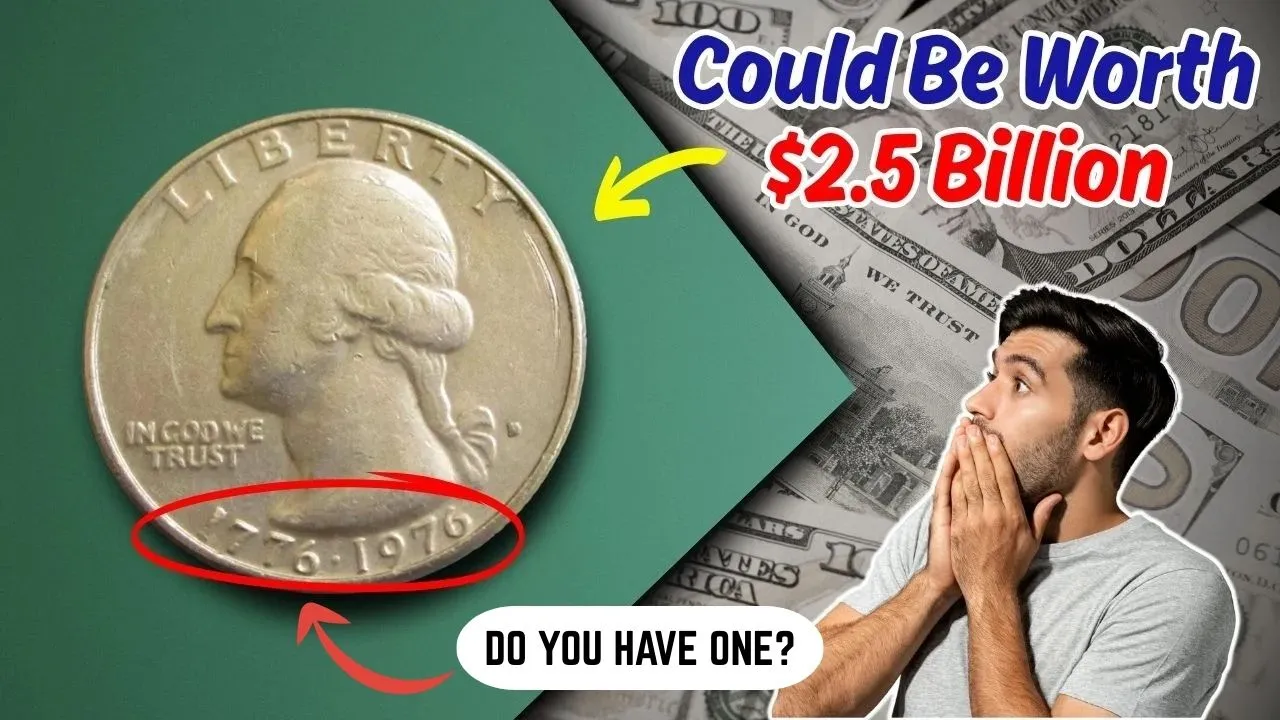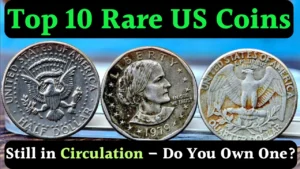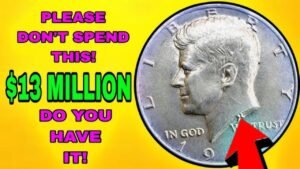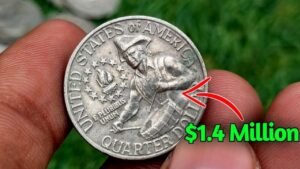Ever pulled a quarter from your pocket and wondered if it’s more than just spare change? The 1776-1976 Bicentennial Quarter, minted to celebrate America’s 200th birthday, is common—but whispers of a rare version worth millions have collectors buzzing. While a $2.5 billion price tag sounds like a stretch, some of these quarters can still fetch thousands. Could you have one? Let’s dive into what makes this coin special and how to spot a valuable one.
The Bicentennial Quarter: A Patriotic Milestone
In 1975 and 1976, the U.S. Mint released the Bicentennial Quarter to mark 200 years of American independence. Unlike regular quarters, these feature a dual date—“1776-1976”—and a unique reverse design: a colonial drummer boy, a torch, and 13 stars for the original colonies. The obverse still shows George Washington’s familiar profile.
With over 1.6 billion minted, these quarters flooded circulation, making most worth just 25 cents. But a few rare ones stand out, turning pocket change into potential treasure.
Why Some Bicentennial Quarters Are Worth Big Money
Most 1776-1976 quarters are ordinary, but certain traits can make them extraordinary. Here’s what drives their value:
- Minting Errors: Off-center strikes, doubled lettering, or missing design elements can boost a coin’s worth.
- Silver Content: Some quarters, especially from the San Francisco Mint, were made with 40% silver for collector sets, increasing their value.
- Pristine Condition: Uncirculated or proof coins, with no wear or scratches, are highly sought after.
- Rare Variants: Rumors persist of a unique coin—possibly struck on an experimental metal or with a special die—that could fetch millions, though no such sale has been verified.
While a $2.5 billion valuation seems like online hype, rare Bicentennial Quarters have sold for thousands, with top examples hitting $20,000 or more at auction.
How to Spot a Valuable Bicentennial Quarter
Think you might have a winner? Here’s what to check:
| Feature | What to Look For |
|---|---|
| Date | Must show “1776-1976” on the obverse. |
| Mint Mark | Look for “S” (San Francisco), “D” (Denver), or no mark (Philadelphia) below Washington’s bust. “S” coins are often silver. |
| Material | Silver coins have a shinier edge and weigh ~6.25 grams vs. ~5.67 grams for copper-nickel. Use a precise scale. |
| Errors | Check for doubled text, off-center strikes, missing elements, or clipped edges. Use a magnifying glass. |
| Condition | Look for mirror-like surfaces (proofs) or no wear (uncirculated). Avoid cleaning coins—it ruins value. |
Pro Tip: If your coin looks unusual, don’t clean it. Take it to a professional grading service like PCGS (Professional Coin Grading Service) or NGC (Numismatic Guaranty Company) to verify its authenticity and value.
Is a $2.5 Billion Quarter Real?
The $2.5 billion claim is likely exaggerated. No Bicentennial Quarter has sold for anywhere near that amount, and experts believe it’s a mix of online rumors and wishful thinking. However, rare versions—like silver proofs or error coins—have fetched $10,000 to $20,000 at auction. For example, a 1976-S silver proof in PR70 condition sold for $19,200 in 2020. While millions may be a stretch, finding a rare variant could still bring a hefty payday.
Why Collectors Love the Bicentennial Quarter
Beyond potential value, the Bicentennial Quarter holds a special place in American history. Its drummer boy design, chosen through a national competition, symbolizes the spirit of 1776. As the largest commemorative coin program of its time, it sparked a coin-collecting craze in the 1970s. Even common versions are cherished for their patriotic vibe and connection to America’s 200th anniversary.
Could One Still Be in Circulation?
Yes! Many Bicentennial Quarters are still in wallets, piggy banks, or coin rolls. Since they look like regular quarters, rare versions—like those with errors or silver content—could be hiding in plain sight. Stories of valuable coins turning up at flea markets, estate sales, or even gas station change keep collectors hopeful. With the U.S. nearing its 250th anniversary in 2026, interest in these coins is surging.
Tips for Protecting and Selling Rare Coins
Found a potential gem? Here’s how to handle it:
- Handle Carefully: Hold coins by the edges to avoid fingerprints or scratches.
- Store Safely: Use acid-free holders or capsules to protect from air and moisture.
- Get It Graded: PCGS or NGC can authenticate and assign a grade, boosting its market value.
- Sell Smart: Use reputable auction houses (Heritage Auctions, Stack’s Bowers) or trusted coin dealers for the best results.
Final Thoughts: Check Your Quarters!
The idea of a $2.5 billion Bicentennial Quarter may be more dream than reality, but rare versions of this coin can still be worth thousands. Whether it’s a silver proof, a minting error, or a pristine uncirculated example, these quarters prove that small change can hold big surprises. Next time you get a quarter with a drummer boy on the back, grab a magnifying glass and check for those key features. You might just uncover a piece of history—or a life-changing treasure.
FAQs About the 1776-1976 Bicentennial Quarter
Q: How much is a regular Bicentennial Quarter worth?
A: Most are worth 25 cents, but silver versions or those with errors can fetch $10–$20,000, depending on condition.
Q: What makes a Bicentennial Quarter valuable?
A: Minting errors (like doubled text or off-center strikes), 40% silver content, and pristine condition drive up value.
Q: How do I know if my quarter is valuable?
A: Check for an “S” mint mark, silver edge, errors like doubled lettering, or mirror-like finish. Get it graded by PCGS or NGC.
Q: Are Bicentennial Quarters still in circulation?
A: Yes, they can appear in change, coin rolls, or old collections, especially since they blend in with regular quarters.
Q: Is the $2.5 billion quarter real?
A: No verified sale supports this claim. It’s likely online hype, but rare versions have sold for thousands at auction.




